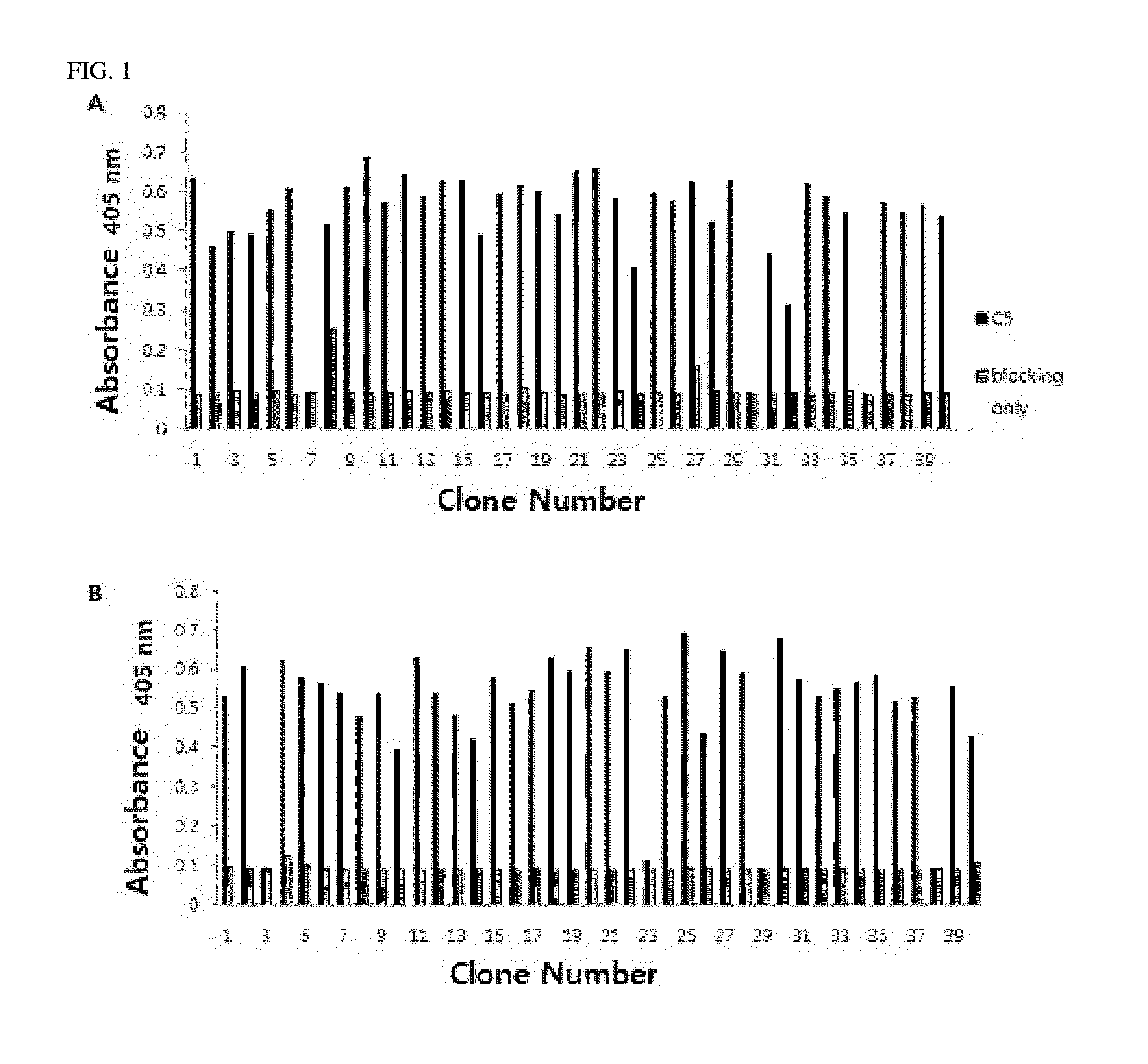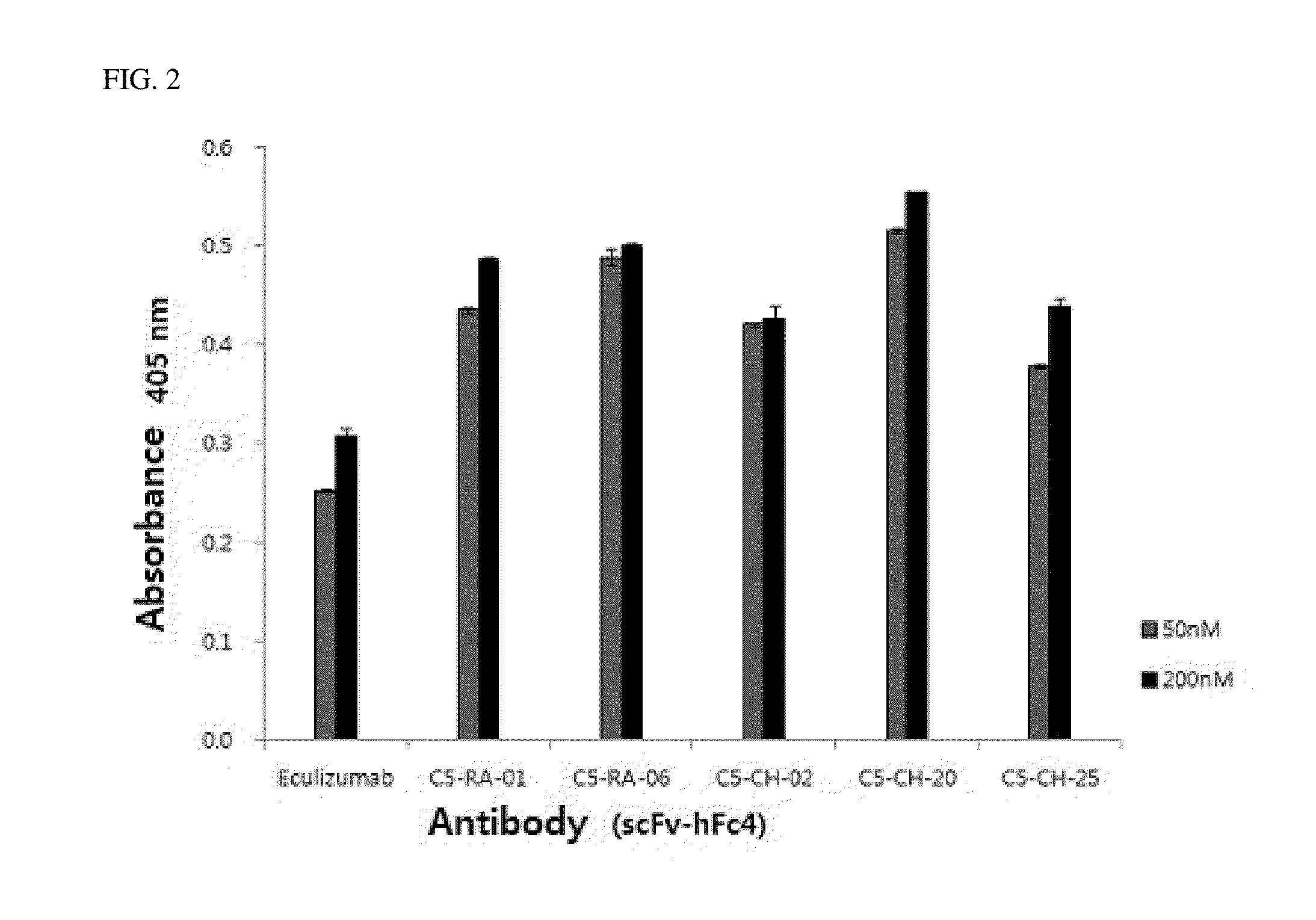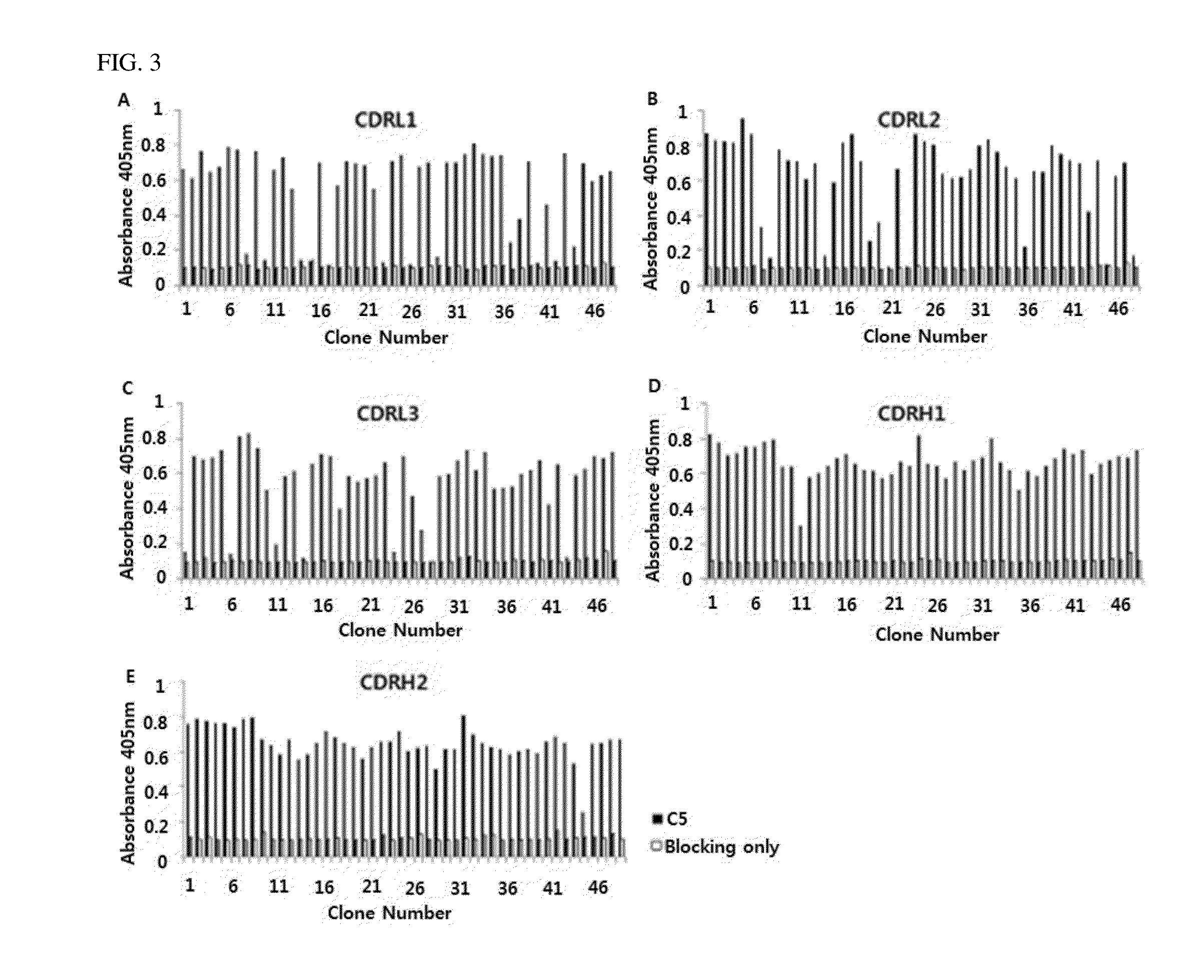C5 antibody and method for preventing and treating complement-related diseases
- Summary
- Abstract
- Description
- Claims
- Application Information
AI Technical Summary
Benefits of technology
Problems solved by technology
Method used
Image
Examples
example 1
Construction of C5 Immune Antibody Library
[0082]5 μg of human C5 protein (Calbiochem) was mixed with the RIBI MPL+TDM+CWS adjuvant (Sigma, St. Louis, Mo., USA) and injected subcutaneously into NZW rabbits and chickens, and boost immunizations were performed three times in rabbits and four times in chickens with 2-week intervals. Total RNA was isolated from the spleen and bone marrow of the immune-finished rabbit and spleen, bone marrow and bursa of fabricius of immune-finished chicken, by using TRI reagent (Invitrogen, Carlsbad, Calif., USA), and first-strand cDNA was synthesized using oligo-dT primer and SuperScript™ III First-Strand Synthesis System (Invitrogen). Single-chain Fv libraries were constructed by using primers of Table 9 (rabbit) and Table 10 (chicken) below that are specific to heavy chain variable regions and light chain variable regions of immunoglobulin. For rabbit scFv library, 10 primer combinations of VL (9λ Vκ and 1×Vλ)) and 4 combinations of VH were used to am...
example 2
Bio-Panning
[0084]3 ug of human C5 antibody was coated with 1×107 magnetic beads (Dynabeads M270-Epoxy, Invitrogen) at room temperature for 16 hours. The beads were washed with PBS and blocked with PBS containing 3% BSA at room temperature for 1 hour. The coated beads were washed and incubated together with Phage-displayed scFv for 2 hours at room temperature. The beads were washed with 0.5% TPBS to remove phages which were not bound. The bound phages were eluted with 100 ul of 0.1M glycine-HCl and neutralized with 6 ul of 2M Tris-HCl (pH 9.0). The eluted phages infected E. coli ER2738 and were rescued with VCSM13 helper phage for overnight amplification. The input and output phage titer were determined by plating the phage infected bacterial culture at 37° C. on LB plate containing 50 μg / ml of carbenicillin. Next day, phage was precipitated by adding PEG-8000 and NaCl as described in Example 1.
example 3
Selection of scFv Clones by Phage ELISA
[0085]ELISA using phages displaying scFvs was performed against human C5 to analyze the selected clones from bio-panning Microtiter 96-well plate was coated with 100 ng of human C5 per well for overnight at 4° C. and blocked with 3% BSA in PBS. Each phage culture was mixed with an equal volume of 6% BSA in PBS, added to human C5-coated 96-well plate, and incubated for 2 hr at 37° C. After the incubation was finished, the plate was washed and incubated with a HRP conjugated anti-M13 antibody (Amersham, USA). After the incubation was finished, the plate was washed, and 1 μg / ml of 2,2′-azino-bis(3-ethylbenzothiazoline-6-sulphonic acid) (ABTS, Amresco, Ohio, USA) in 0.05 M Citric acid buffer and 1.0% H2O2 were added to each well, followed by color formation, and the absorbance was measured at 405 nm.
[0086]Results thereof were shown in FIG. 1.
[0087]FIG. 1A shows immune libraries of rabbit and FIG. 1B shows immune libraries of chicken. As analysis re...
PUM
| Property | Measurement | Unit |
|---|---|---|
| Fraction | aaaaa | aaaaa |
| Length | aaaaa | aaaaa |
| Length | aaaaa | aaaaa |
Abstract
Description
Claims
Application Information
 Login to View More
Login to View More - R&D
- Intellectual Property
- Life Sciences
- Materials
- Tech Scout
- Unparalleled Data Quality
- Higher Quality Content
- 60% Fewer Hallucinations
Browse by: Latest US Patents, China's latest patents, Technical Efficacy Thesaurus, Application Domain, Technology Topic, Popular Technical Reports.
© 2025 PatSnap. All rights reserved.Legal|Privacy policy|Modern Slavery Act Transparency Statement|Sitemap|About US| Contact US: help@patsnap.com



